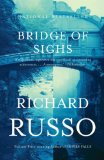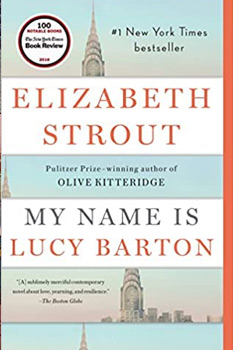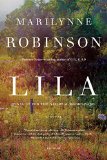Summary | Excerpt | Reading Guide | Reviews | Beyond the book | Read-Alikes | Genres & Themes | Author Bio

Richard Russo has written a massive tome about tiny
events—"small, good things" or "small men with small dreams" in his typically
underplayed phrasing. The world he draws moves forward by nearly inconsequential
events, such as the day in kindergarten when Lou C. Lynch becomes Lucy Lynch and
the name sticks for life, or the way a white girl's overly polite refusal of a
black boy's request for a date—"I'll have to ask my father"—becomes an
acceptance when her liberal father insists that she go, a date which lands the
boy in a coma after the town bullies beat him up for crossing the color line.
Bridge of Sighs is almost like a novel written inside out. Dramatic events
happen in the lives of Thomaston's residents—affairs and deaths and scandals—but
the novel is composed of small moments when its characters quietly step into
their destinies and of the nearly imperceptible links between events and people
that form the town's history. Through minute attention to things like a pencil
sketch that turns out to be prophetic, the brush of one hand against another
that indicates a suppressed intimacy, or a word overheard through a heating
vent, Russo maps a sixty-year history of the town of Thomaston and three of its
residents, Lucy Lynch, his wife Sarah, and their friend Bobby Noonan.
For such an ambitious tale, Russo makes a daring narrative
choice: he hands over most of the storytelling to the character least gifted
with literary talent. A good portion of Bridge of Sighs is told by Lucy
himself, sitting down in the present moment at age sixty to pen his memoir,
revisiting his childhood in a quintessential 1960s upstate New York factory
town. Lucy's voice is unornamented and direct, the voice not of a writer but of
a man determined to reckon honestly with his own life.
Russo's decision to let Lucy tell his own story has its costs.
Lucy's narrative is often ponderous and obvious, like the man himself. He is in
love with Thomaston and records the details of its corrosive social
stratifications with the thoroughness of a sociologist, but the reader often
tires of his descriptions before he does. Lucy's limitations are underscored by
the passages given over to Noonan, which are told in the third person by an
omniscient narrator. These short and infrequent chapters move swiftly, and the
reader is relieved to be back in the hands of a skilled writer. These chapters
also carry a disproportionate amount of the story's interest because they have
more to explain. Lucy the man has grown organically from Lucy the boy, but
Noonan began life as a thug from the wrong side of the tracks and ends it as a
celebrated painter with a worldwide reputation. He is the more charismatic man
with the more ambitious, glamorous story, yet he figures mainly as a glittering
counterpoint to Lucy's unabashedly prosaic life. So why has Russo, in effect, dumbed down his story to tell it through Lucy's eyes?
The value of Lucy's voice unfolds slowly over the course of
Russo's novel. The first third of the book moves too slowly and the last third
accelerates too quickly, as past and present begin to merge and as
more of the narrative is given over to Sarah and Noonan's perspectives. But by
then, the reader has gotten to know Lucy so well that it is a pleasure to see
him through the eyes of others; sometimes it even hurts to encounter others' harsh
assessment of him, a testament to how much he has endeared himself. Sarah and
Noonan's more jaded view of their shared childhood and adolescence reveal Lucy's
memoir as partial and blinkered. But he himself wrestles with this issue, asking
himself why he spends so much time writing a story that can never encompass the
whole truth of a life. His answer: "But is the living of life so different from
the telling of it?" He means that we edit or narrativize life as we move through
it, choosing what to notice and fold into our accounts of ourselves, and what to
ignore or obscure. To watch Lucy do just that through the course of the novel is
to watch a life lived as art. Noonan may be the world-famous painter and Sarah
may also be a talented painter in her own right, but it is Lucy, with his
transparent imperfections and blind spots, whose earnest self-reckoning elevates
him to the stature of an artist.
Bridge of Sighs is captivating for its loving attention to
the town of Thomaston and the particularities of its downtrodden residents, but
even the most innocuous detail maps a world much larger than Thomaston, a
generous world that, by the end of the book, comes to seem so familiar, one is
loathe to leave it.
![]() This review was originally published in The BookBrowse Review in November 2007, and has been updated for the
September 2008 edition.
Click here to go to this issue.
This review was originally published in The BookBrowse Review in November 2007, and has been updated for the
September 2008 edition.
Click here to go to this issue.

If you liked Bridge of Sighs, try these:

by Elizabeth Strout
Published 2016
The profound mother-daughter bond is explored through a mother's hospital visit to her estranged daughter by the Pulitzer Prize-winning author of Olive Kitteridge and The Burgess Boys.

by Marilynne Robinson
Published 2015
Marilynne Robinson, one of the greatest novelists of our time, returns to the town of Gilead in an unforgettable story of a girlhood lived on the fringes of society in fear, awe, and wonder.
Your guide toexceptional books
BookBrowse seeks out and recommends the best in contemporary fiction and nonfiction—books that not only engage and entertain but also deepen our understanding of ourselves and the world around us.